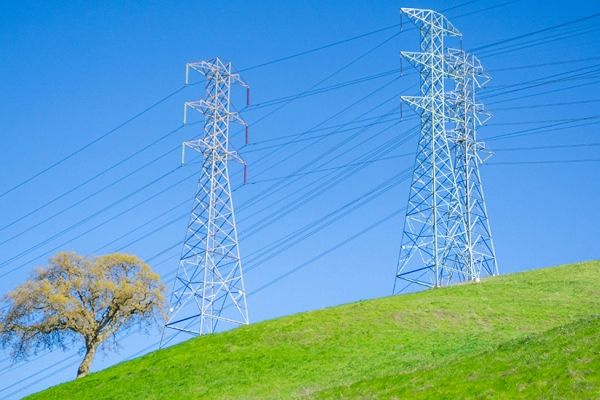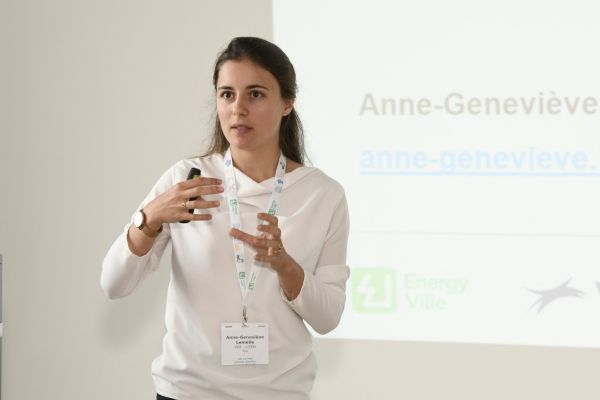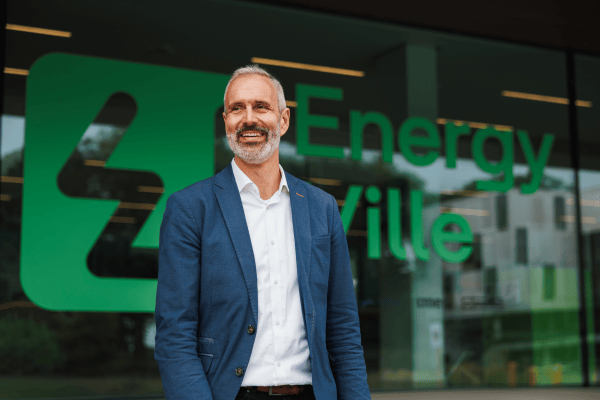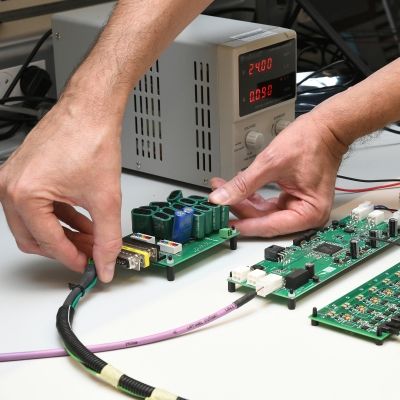3 reasons why we should all charge (much) more at work
By 2030 we expect 1.5 million (mainly professional) electric cars in Belgium, which all need to charge about 10kWh a day, or about three times per week 25 kWh. By allowing people to charge at work (free or paid) and becoming large-scale EV charging hubs, companies:
- lower 25% of the carbon emissions required for the generation of electricity,
- allow grid operators to provide a better charging service to all EV drivers
- lower the total cost of ownership of the EV for the fleet manager.

1. Lower 25% of the carbon emissions required for the generation of electricity:
1.5M professional EV’s need about 5 TWh of electricity. That’s the equivalent of 25% of the total amount of electricity that will be generated by then with fossil fuels (gas or imported coal-based electricity). This fossil fuel-generated electricity is mainly used to cover our nightly needs. If we’d charge all our cars at night, we will need about 20TWh of electricity generated with fossil fuels, whereas this would only be 15TWh if we would charge everything during the day. That would make a difference of 1M ton of CO2, the equivalent of 10% of the meat-eating population becoming a vegetarian. Why not charge our EV’s with all this solar energy during the day at work?
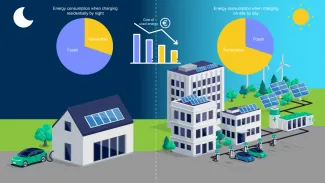
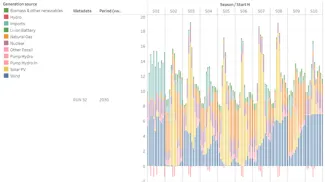
2. Allow grid operators to provide a better charging service to all EV drivers
Belgium’s biggest DSO (Distribution System Operator) Fluvius is indicating that the higher voltage part of their grid (i.e., the part that is hosting the professional sites) needs significantly fewer reinforcements than the lower voltage part (serving mainly residential dwellings) to be able to sustain a 25%-75% split between work and home charging. Additionally, it will take 10 years to reinforce the lower voltage part. Why shouldn’t we charge more than 25% on that higher voltage part early on then?

A fundamental factor of success for the energy transition will be the possibility to execute all required investments on utility, professional & residential level. There is a strong need for money, materials and manual workforce to reinforce not only Belgian, but all grids in the EU. By prioritizing the reinforcement of the grid towards a smaller number of professional sites as charging hubs (compared to the total number of residential dwellings), DSO’s can not only deliver higher charging speeds for everyone, but they can also deliver it quicker. This way, they facilitate a faster switch to full EV’s without impact on individual driving autonomy (due to slow charging speeds in a congested residential distribution grid).
3. Lower the total cost of ownership of the EV for the fleet manager
By 2030, there will be more than one million electrical fleet cars in Belgium. The cost of ‘fuel’ accounts to 15% - 30% of the total lease cost. The choice in where an employee charges, strongly determines whether you are at the lower of the higher part of that fork. Employees driving such a car, charge at 3 different locations: On the go, destination(/work) and private(/home).
a) Private / home
An average family in Belgium pays more than 0,40 € / kwh for electricity contracts closed since January 2022 (including transmission & distribution costs, taxes & levies).
b) On the go (mainly highway and street)
Due to the lack of time (and other possible occupations) of people while moving from one place to another, these hubs need to deliver high and fast charging service, coming at a premium price of more than 0,65€ / kwh.
c) Work/destination
An average SME company in Belgium pays between 0,25 – 0,30 € kWh for contracts closed since January 2022. Additionally, companies can make use of variable price contracts (with different prices per hour of the day), enjoying much lower prices during the day due to the result of both 1) more available solar energy and 2) less residential demand on system level.
If a fleet manager pays the cost of charging for a fleet car, it is in his biggest interest to encourage employees to charge as much as possible at work, as this saves him between 25% – 50% on his cost of ‘fuel’.
An adequate energy management system for the building and charging sessions is required
If a facility manager is however not careful, he can quickly undermine these benefits. He can charge cars during expensive and/or polluting moments of the day, or schedule many simultaneous charging sessions and draw expensive peak consumption off the grid. He needs to plan the charging sessions carefully, in order:
- To ensure that the autonomy requirements of the drivers are met.
- To make optimal use of local PV production during the day.
- To make optimal use of lower variable energy prices during the day.
- To avoid strong (and expensive) peak usage of the grid.
- To avoid charging at times when a specific local building or industrial load is already creating temporary peaks.
- To avoid inefficient bottlenecks in the electrical lay out of his site.
All these elements need to be taken into consideration when making the optimal charging plans for the different charging sessions on his site.
Are you a facility/fleet manager looking for a smart solution to optimize your EV charging solutions?
Contact Thomas and find out what you can do.




